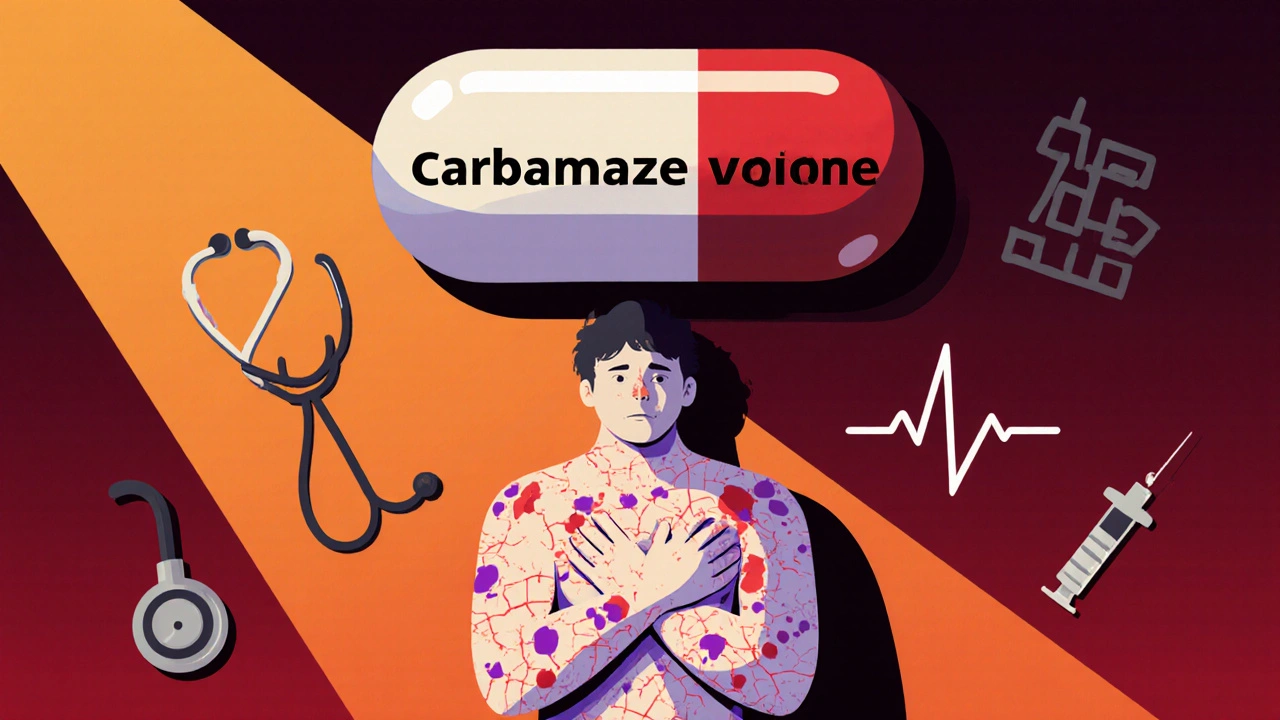Toxic Epidermal Necrolysis: Causes, Risks, and What Medications Can Trigger It
When your skin starts to peel off like a sunburn gone wrong, it’s not just a rash—it could be Toxic Epidermal Necrolysis, a rare but deadly skin condition where large areas of the epidermis detach from the body. Also known as Lyell's syndrome, it’s one of the most severe forms of drug-induced skin reactions and demands immediate medical care. This isn’t something that fades with lotion or antihistamines. It’s a medical emergency that often starts with flu-like symptoms, then explodes into painful blisters and skin loss covering more than 30% of your body.
Most cases are triggered by medications, specific drugs that cause an extreme immune response in susceptible people. Antibiotics like sulfonamides, anticonvulsants such as carbamazepine and phenytoin, and painkillers like allopurinol are the usual suspects. It’s not about taking too much—it’s about your body’s unique reaction. One person can take the same drug for years with no issue, while another develops Toxic Epidermal Necrolysis after just one dose. This is why delayed drug reactions, side effects that show up days or weeks after taking a medicine are so dangerous. You might think you’re safe because you’ve taken the pill before, but the immune system can suddenly turn on you.
Toxic Epidermal Necrolysis is closely related to Stevens-Johnson Syndrome, a less extensive but similar condition that affects less than 10% of the skin surface. Doctors often see them on a spectrum—the same drugs can cause either, depending on how your body responds. If you’ve ever heard of DRESS syndrome or other severe allergic reactions to meds, you’re seeing part of the same family of risks. The good news? These reactions are rare. The bad news? They’re often missed until it’s too late. Early signs like fever, burning eyes, or a red, spreading rash shouldn’t be ignored. If you’re on a new medication and your skin starts to hurt or peel, get to a hospital—not a pharmacy.
What you’ll find in the posts below isn’t just a list of articles—it’s a practical guide to recognizing the warning signs, understanding which drugs carry the highest risk, and learning how to avoid or respond to these reactions. From how to check if your meds have been recalled to what to do if you suspect a delayed reaction, these resources help you stay one step ahead. You won’t find scare tactics here. Just clear, real-world info from people who’ve been through it—and the experts who study it.
Stevens-Johnson Syndrome and Toxic Epidermal Necrolysis are rare but deadly drug reactions that cause skin and mucous membrane damage. Learn the warning signs, top triggers, and why genetic testing could save your life.

